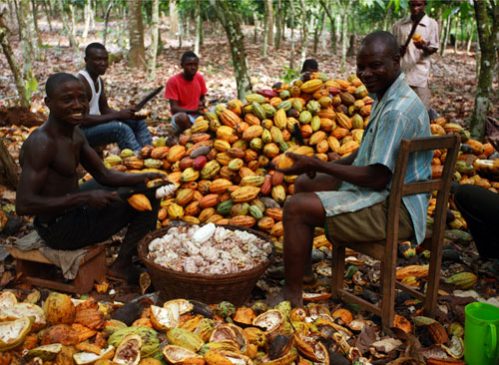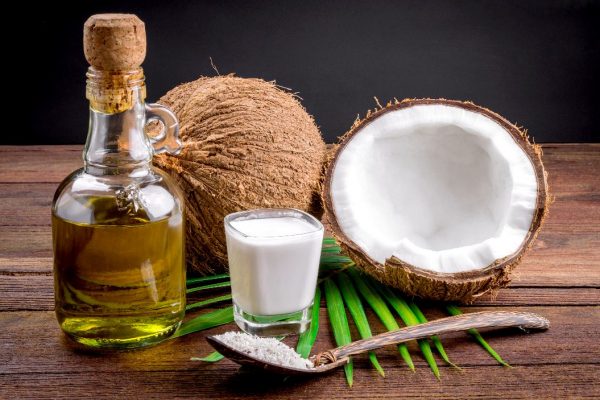Cocoa: How To Exploit The Huge Global Market For Chocolate Products

Hundreds of years ago, the Greeks referred to chocolate as the ‘food of the gods’. Today, chocolate is a highly demanded luxury product and an impulsive treat for millions of people around the world. No wonder the global market for chocolate and cocoa beverages is now worth over $100 billion (and growing) every year.
Although the developed and fast developing countries (especially in Europe, Asia and North America) consume over 90 percent of the chocolate produced every year, chocolate largely exists because of Africa.
This is because up to 70 percent of cocoa, the major ingredient for making chocolate, is grown and harvested in Africa! Yes, you’re right; no Africa, no chocolate!
Cote D’Ivoire (Ivory Coast), Ghana, Nigeria and Cameroon are our continent’s largest producers but there is still unexploited potential in other West and Central African countries that are also well suited for cocoa production.
This article explores the interesting opportunities for African entrepreneurs in cocoa production and trade which would benefit from the explosive global demand for chocolate in the near future.
Why is cocoa such an important and lucrative crop?
Why is cocoa such a valuable commodity in today’s and tomorrow’s world?
As is my usual practice on Smallstarter, I love to explore the basics of every idea so everybody reading this can appreciate the potentials of the business.
In this section, we’ll explore the interesting journey of cocoa from its origins as a common raw material (cocoa beans) to international hot-selling product (chocolate).
The cocoa plant is a small, evergreen tree (usually between 13 to 26 feet tall) that grows exclusively in the deep tropical regions of the world.
In West and Central Africa – especially Ivory Coast, Ghana, Nigeria and Cameroon – some 2 million small-scale farmers are responsible for more than 70 per cent of all the cocoa produced in the world today.
A cocoa tree usually matures and begins to bear fruit (pods) when it is about four or five years old.
On the average, a single cocoa tree produces between 20 and 30 pods, which are the oval-shaped yellow/orange things you see hanging on the tree trunk in the picture to your right.
Each pod contains about 20 to 50 seeds, known as cocoa beans. These beans are the goldmine of the cocoa plant because they are processed into cocoa liquor, cocoa butter, cocoa powder, and most popularly, chocolate!
After the pods ripen, they are harvested and cut open to extract the valuable cocoa beans. Surprisingly, the beans usually have a strong bitter taste.
As a result, they must be fermented for a couple of days (about five days) to develop the sweet flavor that we enjoy in chocolate. After fermentation, the cocoa beans are dried, cleaned, roasted and processed into several valuable products, the main ones being:
· Cocoa butter: This is a creamy-colored edible vegetable fat with a cocoa flavor and aroma that is extracted from cocoa beans. Cocoa butter makes up more than 50 percent of the weight of cocoa beans and is used to make chocolate, as well as several ointments, toiletries and pharmaceutical products.
· Cocoa solids are the light brown or reddish-brown substances that remains after cocoa butter is extracted from cacao beans. They are often sold as a final product in the form of cocoa powder (or cacao) which is a major ingredient in beverages and drinks across Africa. Cocoa solids are also used to make chocolate, chocolate syrup and other chocolate-based confections.
The global madness for chocolate!
Chocolate is a huge business and one of the best-selling products in the world.
A 2012 KPMG report reveals that the psychology behind chocolate suggests consumers see it as a ‘naughty but nice’ impulse treat.
Although Western Europe remains the world’s largest chocolate market, the United States consumes more chocolate than any other country in the world. There is also a fast-growing demand for chocolates in emerging economies like Russia, Brazil, Mexico, India and China.
In fact, the demand for cocoa for chocolate is growing so fast that experts now warn we may run out of affordable cocoa supplies within 20 years.
The image below shows a snapshot of the world’s twelve biggest chocolate consumers. All of these countries are either fully developed or part of the strong emerging economies.
This snapshot clearly shows that as a country’s economy grows and people’s incomes increase, they develop an appetite and taste for exotic foods like chocolate.
Why should African Entrepreneurs be interested in the cocoa business?
There are a couple of reasons why the cocoa business remains an interesting opportunity for African entrepreneurs. Let’s look at three of them…
1. Africa has a strong advantage in the cocoa business
Although the cocoa plant is not native to Africa and was introduced to our continent over 100 years ago from South America, Africa now dominates the global supply of cocoa.
Fortunately, a significant portion of our continent lies within the narrow belt around the earth’s equator that is best suited for cocoa cultivation. Outside this belt, cocoa trees may find it impossible to grow.
In addition to Africa’s suitable location, the evergreen forest and climatic conditions (adequate rainfall and favourable temperatures) makes West and Central Africa a sweet spot for cocoa production.
Like I already mentioned, Africa dominates the world’s cocoa supply with over 70 percent of the market. This makes Africa very invaluable to the cocoa business and its related products, especially chocolate.
Over two million smallholder families and communities in Cote D’Ivoire, Ghana, Nigeria and Cameroon have been cultivating cocoa for decades.
As a result, there is a lot of experienced labour in the region who have accumulated extensive knowledge about the cocoa business over the years.
There are over 25 countries in the West and Central Africa region which, by virtue of their location, have a significant advantage to make money from the international cocoa business. However, only four countries in this region (Cote D’Ivoire, Ghana, Nigeria and Cameroon), are dominant cocoa producers.
There still remains a lot of unexploited opportunities in cocoa production in Guinea, Sierra Leone, Liberia, Central African Republic, Congo and several other countries in this region with fertile land and favourable climate that is suited for cocoa production.
In addition to the countries in the region that are yet to exploit the potentials of cocoa, there are also countries like Nigeria and Cameroon that are under-utilizing their potentials for cocoa.
Nigeria, for example, which used to be Africa’s top cocoa producer now produces significantly less. There is still a lot of room in Nigeria and Cameroon for more cocoa.
2. There is an ongoing and future boom in demand for cocoa
Statistics show that people develop a taste and appetite for impulse and luxury products as their incomes increase. Therefore, it is not surprising that almost all the chocolate that is produced from cocoa every year is consumed in the developed and fast developing countries.
According to Oxfam, the demand for cocoa is growing to a point that some experts warn that the world may run out of affordable supplies of cocoa within 20 years.
More pressure will be exerted on this already high demand by countries like China and India which will have over 450 million people joining the middle class over the next ten years.
Middle class people usually have higher incomes and some extra money to spend on exotic items like chocolate. This is likely to exponentially increase the current demand for cocoa.
We must not forget that although chocolate is the biggest and most popular cocoa product, it is not the only cocoa product in high demand. Cocoa beverages are heavily consumed (especially by growing children and young adults) in developing regions of the world like Africa.
Our continent now has the fastest growing population in the world. With the world’s highest birth rate, Africa’s current population of nearly one billion people is predicted to more than double in 40 years to 2.3 billion.
As a result of this explosive population growth, more people in the developing world will depend on cocoa farmers to produce the valuable beans used for producing these beverages.
And because cocoa can be grown in only a few other places outside Africa, the high demand for cocoa products will provide a steady and lucrative market for cocoa producers.
3. Increasing investments and support for cocoa farmers
The truth is, while the cocoa business may seem very lucrative on the outside, many cocoa growers are very poor people.
How is this possible?
How can the people who produce the major and most important ingredient for chocolate be poor?
Well, somehow the middlemen and giant chocolate companies have found a way to take a significant chunk of profits while leaving very little for the poor farmers.
The image below shows the share of the price of chocolates that reach the farmers. The reality is clear; the retailers and supermarkets are the big winners.
As a result of the little returns made by cocoa farmers over the past few years, many of them have become frustrated and are increasingly abandoning cocoa to cultivate more profitable crops like rubber and oil palms.
Because the international cocoa industry now understands that it could collapse if African cocoa farmers run out of business, governments, NGOs and the big chocolate companies are now making huge efforts to make cocoa production more lucrative for African farmers.
Some of these initiatives include:
- Nestle and Cargill, two of the world’s largest food companies that sell a lot of chocolate products are investing millions of dollars to train African cocoa farmers and providing disease-resistant and high-yielding varieties for farmers.
Nestle’s Cocoa Plan is an initiative that will invest over $120 million in cocoa development over the next ten years. Cargill calls its program the Cocoa Promise. The program has trained over 90,000 farmers in Cote D’Ivoire to improve their skills in cocoa cultivation.
- To increase the amount of money farmers can make from the cocoa business and encourage sustainable cocoa production, NGOs like Fairtrade, Rainforest Alliance and UTZ have set up certification programs to protect cocoa farmers and increase the profit potential of their produce.
Fairtrade for example has a very interesting program which assures that farmers are never paid below $2,000 per ton to protect them from the often wild swings in cocoa prices.
Everybody who loves chocolate and other tasty cocoa products understands one simple fact: no cocoa farmers, no chocolate! As a result, these efforts that are aimed at helping farmers will boost the lucrativeness of the cocoa business in the near future.
Want to enter the cocoa production business? Here are some tips…
Cocoa passes through a number of interesting stages from the farms where they are cultivated and harvested, to the big manufacturing plants that use them to manufacture chocolate and beverages.
The cocoa value chain starts from the farmer and ends with the global brands like Nestlé, Cadbury and Hershey that produce chocolate and several other cocoa products.
If you would like to enter the cocoa business, you must first decide the role you want to play in the cocoa value chain.
Would you like to own a farm or plantation for cultivating cocoa trees? Or would you rather act as a middleman who buys the harvested and dried cocoa beans and sell them locally or export to processors overseas?
You could also be a grinder or chocolate maker but these will require huge capital investment and lots of technical knowledge and skills.
The image below is a visual representation of the different players in the cocoa industry and the processes that lead from cocoa beans to chocolate bars.
If you intend to become a farmer and cultivate cocoa trees, getting the land with suitable characteristics is important.
Cocoa grows well in well-drained soils and a variety of soil types. Because cocoa is sensitive to water deficiency, the area should have plentiful rainfall which is well distributed throughout the year.
Using new and hybrid varieties of cocoa is also very important. These new varieties mature earlier, produce more cocoa pods and are resistant to diseases.
If your preference is to trade in cocoa beans and possibly become an exporter to cocoa grinders and processors overseas, there are a couple of things you must know.
Internationally traded and export grade cocoa usually have specific requirements and high quality standards. If cocoa beans do not meet these standards, they are often rejected by the customers and you’ll lose a lot of money.
In addition to quality, price is also another important factor you must follow closely. International cocoa prices change very often based on market supply and demand, poor harvests or political instability in cocoa producing countries.
To avoid any losses, cocoa traders must always consider the effect of pricing on their trading business.
Above all, there are usually cocoa research and support programs run by NGOs or government offices in cocoa producing countries. Joining these programs and visiting the offices will provide you access to quality information about the cocoa business in your country.
You could also make some connections that will help your learning and teach you more about the business.
Interested in the cocoa production business?
It’s interesting that the world has fallen in love with chocolate, cocoa butter and other cocoa products. Fortunately for us, cocoa can only grow in a few places around the world, and parts of Africa belong to this exclusive zone.
Given the expected explosion in the demand for cocoa products in the near future, there is indeed an opportunity for Africa to produce the cocoa that will feed the wild global consumption.
Copyright MMS Plus.
All rights reserved. This material, and other digital content on this website, may not be reproduced, published, broadcast, rewritten or redistributed in whole or in part without prior express written permission from KINGS COMMUNICATIONS LIMITED.







